THE “IMPOSING” VIEW FROM OCEAN HILL (1848)
******************************************************************************************************************************** Brownstone Detectives investigates the history of our clients’ homes. The story you are about to read was composed from research conducted in the course of one of those investigations. Do you know the history of YOUR house? ******************************************************************************************************************************** Before there was Ocean Hill—the Bedford-Stuyvesant neighborhood—there was Ocean Hill—the section of Green-Wood Cemetery. Whether one influenced the other is lost to the ages. What is clear, however, is that both locations got their names from a geographical point from which a body of water could clearly be viewed. “At this point, now known as Ocean Hill,” described a contributor (whose pen-name, revealingly, was Investment) in an edition of the Brooklyn Daily Eagle published just a few years before the Civil War began, “we have reached the highest point on the avenue (Fulton Street) and the most commanding elevation of ground in the city; and which, for grandeur, beauty and variety of its scenery, cannot be surpassed. “The ocean view,” Investment continued, “is especially grand and imposing.” Investment, whose contribution to the paper existed as a thinly veiled promotional piece for Brooklyn, was describing the “advance in the value of Brooklyn real estate.” From Fulton Ferry he advanced down Fulton Avenue to “gather such information as will enable the public to form an intelligent estimate as to the present and prospective value of property on and near this great thoroughfare.” “At this point Fulton avenue is distant but a few hundred feet from Atlantic avenue on the south, and Broadway on […]
THE FLIGHT OF MOSES MAY’S MAD COW (1865)
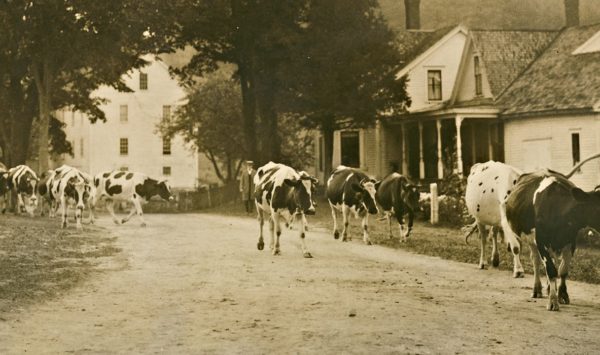
******************************************************************************************************************************** Brownstone Detectives investigates the history of our clients’ homes. The story you are about to read was composed from research conducted in the course of one of those investigations. Do you know the history of YOUR house? ******************************************************************************************************************************** Enjoy this old story about some Brooklyn cows getting loose outside of their normal environs – which, back in old Brooklyn, were quite often our city streets. While doing house research, we found a colorful little story in the Brooklyn Daily Eagle of 1865. It involves two Germans and an Irishman, as well as a supporting cast of a number of primarily immigrant Brooklynites. The story is led by a main character – a pretty “mad cow” – the kind with horns – that went rushing down Bushwick Avenue, having to be taken down by a “citizen,” whereupon it was delivered to a local slaughterhouse for gutting and the production of many sides of meat. Although the article does not expressly state such – stories from this period were famously short on important details – it appears that the original owner lost his cow to a number of very hungry Bushwick pre-hipster citizens. THE FLIGHT OF MAD BESSIE DOWN A VERY BUSY BUSHWICK To set the scene, it all started at about 4 p.m. on Bushwick Avenue in the 16th Ward. Mr. Moses May, a German immigrant of 136 Remsen Street, was driving a drove of cattle along the avenue, after a long day of their bovine grazing in a field, […]
THE HIPSTERS OF WARTIME FORT GREENE (1864)
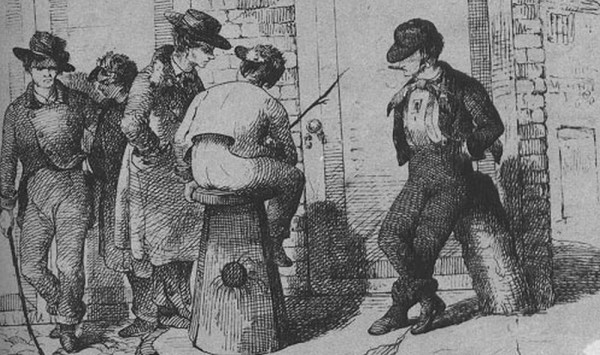
******************************************************************************************************************************** Brownstone Detectives investigates the history of our clients’ homes. The story you are about to read was composed from research conducted in the course of one of those investigations. Do you know the history of YOUR house? ******************************************************************************************************************************** “I lean and loafe at my ease observing a spear of summer grass.” Walt Whitman wrote this line at the beginning of the poem that later became “Song of Myself.” Whitman was a self-styled loafer. And, in the mid-1800s, loaferism was not a very popular pastime – excepting, of course, with the loafers. Loafers, to bring the term into a modern day focus, were the rowdy hipsters of their times – non-conforming, proudly different, and not at all afraid to show it. “…(T)he age abounded in loafers. There were literary loafers, Yankee loafers, French loafers, genteel loafers, common loafers, and country loafers, among others…” noted Michael Zakim a paper entitled, The Business Clerk as Social Revolutionary; or, a Labor History of the Nonproducing Class. “(L)oaferism was essentially a metropolitan phenomenon,” he continued, “haunting the city’s sidewalks, wharves, museums, and parks, and serving as a ready epithet for anyone needing to hurl an insult.” And insults and rowdyism seemed to be what they did best. The newspapers are filled in ante- and post-bellum times of accounts of loafers, how bad they were, and what the good, upright, and moral citizens were to do about them. “Loafers were known for cursing without shame and for smoking cigars,” Zakim noted. “They cared little for […]
THE LURE OF A FEDDERS HOUSE (1902)
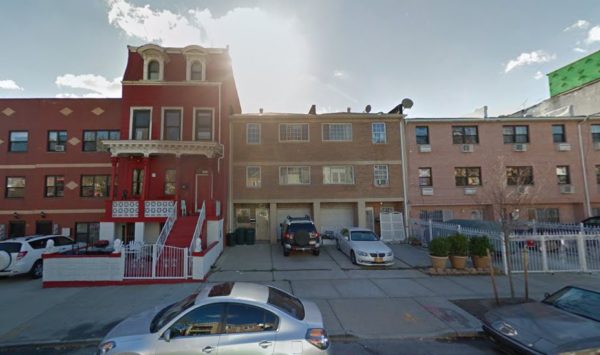
******************************************************************************************************************************** Brownstone Detectives investigates the history of our clients’ homes. The story you are about to read was composed from research conducted in the course of one of those investigations. Do you know the history of YOUR house? ******************************************************************************************************************************** (In 1868, Quincy Street [between Bedford and Nostrand avenues] boasted of rows of beautiful Victorian wood-frame homes. The row pictured above contained houses like the red building above.) In 1902, luxurious wood frame houses that had been built closer to the middle of the century before were beginning to show their wear – not just in their physical appearances, but also within the rental rolls that such structures had previously been able to command. Since 1868, when the above house (third from left) was built, brownstone and limestone fronted houses had come into vogue, attracting those with means to buy and rent them, while forcing owners of the antiquated frame houses, due to the old issue of supply and demand, to reduce their rents – significantly. “There is a row of three story frame houses on Quincy street, between Bedford and Nostrand avenues which illustrates the demand for houses with a modern style of front,” noted the Brooklyn Daily Eagle. “The Quincy street houses were built in 1868 by a well known architect and builder. They are 20 feet wide on an extra deep lot. The accompanying picture shows the appearance of the houses (no photograph was actually printed with this article). They sold for $9,000 each upon completion. Those who […]
THE LONG SLOW DEATH OF REID SQUARE (1870)
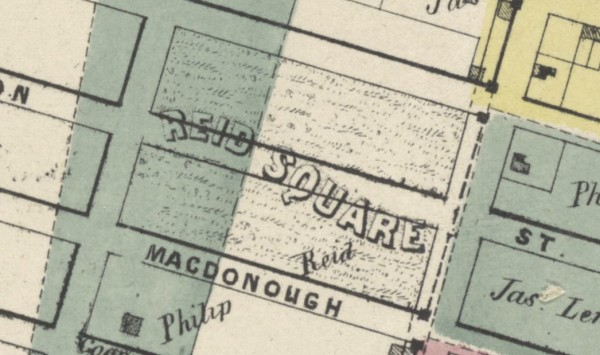
******************************************************************************************************************************** Brownstone Detectives investigates the history of our clients’ homes. The story you are about to read was composed from research conducted in the course of one of those investigations. Do you know the history of YOUR house? ******************************************************************************************************************************** Laid down by the Brooklyn street grid commissioners in the 1830s, Reid Square was a planned park that was to be comprised of two of Brooklyn’s city blocks in the Town of Bedford. Named after the owner of the farmland that the once-future park was to grace, Philip Reid, Reid Square never ended up being developed. The Square was to be bounded by Reid and Stuyvesant Avenues and Halsey and MacDonough Streets. Macon Street, which, for all intents and purposes, would have passed directly through the square at its center, was to be closed at that point. In 1869, however, as the park had been laid out but not improved, the Committee on Opening Streets of the Brooklyn City Common Council met and proposed a resolution to “draft an act to the Legislature to close Reid Square and lay down Macon Street from Stuyvesant to Reid aves.” This proposal was adopted and later in April of 1869, the Legislature passed the act, dooming Reid Square to an historical footnote. It is quite probable that powerful real estate speculators at the time forced the planned public square into its stillborn state, allowing the properties on these streets to be broken up into lots and then sold at auction for development purposes. Follow @BrownstoneDetec […]
THE “GOODFELLAS” OF CUMBERLAND STREET
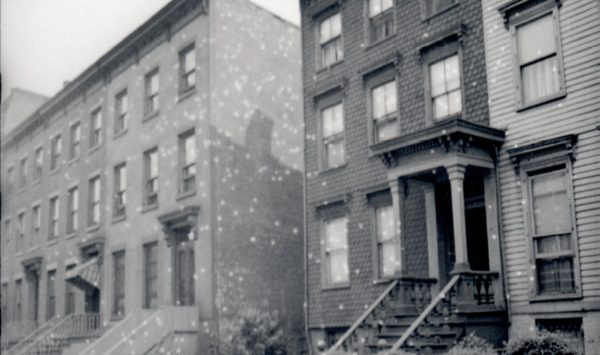
One of the Brownstone Detectives’ first House History Books, No. 231 Cumberland Street: The Story of a House, tells the story of an 1852 antebellum frame home just steps from Fort Greene Park. It’s an action-packed tome, replete with treachery, “poudrette,” “small art,” SROs, and the gangland figures from “Goodfellas.” Here is a brief timeline of the history of this single landmarked property, matched up with “spreads” from the book: THE HISTORY OF A BROOKLYN HOUSE The land beneath which No. 231 would someday rise, started out as a tobacco farm owned by the first Italian immigrant to New York, Pietre Cesare Alberti. The farmland would eventually be built upon in 1851-2, when builder John Ross constructed a row of three homes there. First owned by a woman with a tragic history, a melodrama involving treachery, another man, and an infant daughter – which became the gossip of the newspapers of the time – No. 231 was rented out throughout the the 1850s and 1860s, in addition to many returning Civil War veterans, to merchants and their small families. One of those merchants featured prominently in the founding of the Lafayette Avenue Presbytery Church. Before this, however, he had begun his interesting career as a Night Soil Man – starting a company which, amongst other “agricultural” endeavors, collected human excrement from the backyard privvies of Brooklyn, selling this “compost” to Long Island farmers as the appropriately – if euphemistically – named “poudrette.” The property was then owned by an immigrant, […]
“TERMINATION OF OUR DAYS OF GRACE…” (1864)
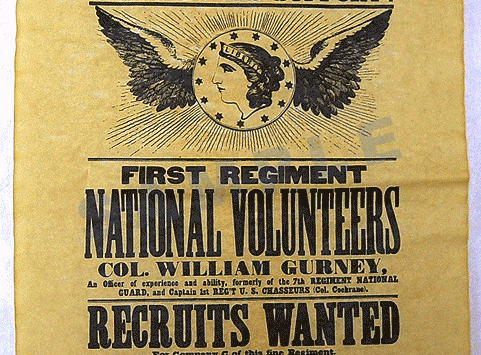
******************************************************************************************************************************** Brownstone Detectives investigates the history of our clients’ homes. The story you are about to read was composed from research conducted in the course of one of those investigations. Do you know the history of YOUR house? ******************************************************************************************************************************** More than 150 years ago today, the Brooklyn Daily Eagle was waxing melancholy and composing prose over the “approaching draft,” wondering aloud whether the government would enforce it, thereby sending thousands of Brooklynites into the military. “As the days roll by, nearer and nearer approaches the termination of our days of grace, the dreaded 5th of September, when the wheels at the Provost Marshal’s offices will make their fatal rounds and thousands of trembling citizens will be transformed into soldiers. “As a matter of course, an event so momentous to the able-bodied and slim-pursed portion of the population, which is, after all, the largest portion of our people, forms the great stable of conversation, “The burden of their thoughts by day And dreams by night, “and even the momentous issues involved in the the Chicago Convention,” the Daily Eagle continued, “‘pale their lights’ in the shadow of that simple wheel, whose dark recesses are pregnant with the fate of so many thousands of families in our midst.” Some things never change… Follow @BrownstoneDetec Share ———————————————————————————————————————– The Brownstone Detectives Brownstone Detectives is an historic property research agency. Our mission is to document and save the histories of our clients’ homes. From our research, we produce our celebrated House History Books and House […]
THE “SCREAM” OF MACON STREET (1907)
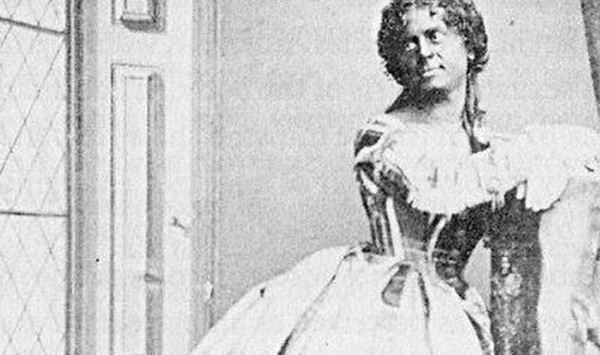
******************************************************************************************************************************** Brownstone Detectives investigates the history of our clients’ homes. The story you are about to read was composed from research conducted in the course of one of those investigations. Do you know the history of YOUR house? ******************************************************************************************************************************** Female “personators” seemed to bring out the passion in folks back in the day. Maybe there was less sexuality involved in the whole dressing-as-a-woman thing. Or maybe it was simply a matter of sexuality not mattering at all. Or, as some say, it was everything. But when “The Great Eugene” took the stage – and he took the stage always as a woman – men, in particular, seemed to find themselves singularly rapt in attention and admiration at the spell that the talented female personator was casting over them. BUILDING THE PERFECT IMPERSONATOR The Great Eugene, otherwise known simply as Eugene, was named Eugene D’ameli as a child. He was born on Manhattan in 1836, and, according to The New York Dramatic Mirror (the Broadway rag of the time), he made his first debut at the tender age of 17, playing what he would end up playing the rest of his career – a “prima donna” – a persona which “he improved and perfected until it was considered the best of its class.” His partner, “Johnny” Unsworth, of 700 Macon Street, recalled Eugene’s beginnings in the minstrel theatre. “Because he was so small and slight and built somewhat like a woman Gene started female impersonations, always in black face, as a […]
HAPPY “SURGE PRICING” NEW YEAR! (1867)
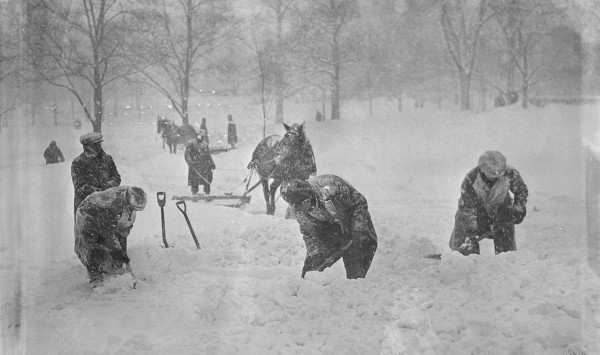
******************************************************************************************************************************** Brownstone Detectives investigates the history of our clients’ homes. The story you are about to read was composed from research conducted in the course of one of those investigations. Do you know the history of YOUR house? ******************************************************************************************************************************** A blinding snowstorm welcomed in the New Year in the City of Brooklyn in 1867. From “daylight and until early noon” the snow was “falling, falling fast,” as “thousands of juveniles commenced the year industriously, by earning their New Year’s gifts, in sweeping and shoveling the snow off the sidewalks. ” In spite of the snowfall, the Brooklyn Daily Eagle reported that “there never were so many open houses and never so many callers.” SURGE PRICING IN 1867 “Callers, as a general thing, didn’t mind the snow much, while to the keepers of livery stables, the appearance of the morning air, filled with its myriad snow flakes, became a vision, exceeding in its richness the fabled mines of Golconda.” In a word, these taxi drivers were seeing dollar signs within the Brooklyn snowfall. And the harder the snow fell, the more money their sleighs would be bringing in. “They knew that the light wagons for which they had been paid in advance, would not be taken out, and for sleighs they could charge such prices as they chose.” Like a modern-day taxi service – upon which rested no fixed rates – these 19th century taxi hacks would begin to set new prices on their services, determining – based upon the wiles […]
92 ROUNDS IN IRISH RED HOOK (1864)
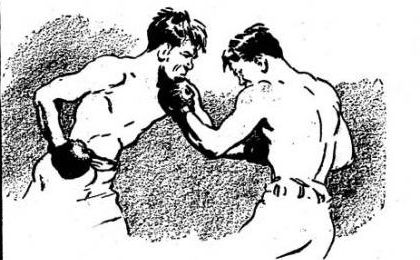
******************************************************************************************************************************** Brownstone Detectives investigates the history of our clients’ homes. The story you are about to read was composed from research conducted in the course of one of those investigations. Do you know the history of YOUR house? ******************************************************************************************************************************** It was an amazing feat even for the times. Although fights were often arranged for the amusement of their onlookers or the profits of the inevitable bettors back then, unauthorized prize fights were, even in 1864, against the law. It was in that year that just such an illegal “Feather Weight” contest was arranged, “in the rosin yard at the foot of Van Brunt street at 7 o’clock” the morning of 4 December. IRISH BARE-KNUCKLE BOXING The Irish, it was maintained, were known for their fighting spirit, and Red Hook, having no dearth of wiry Irish lads looking to swing a punch or two at any adversarial comers, this particular match did not appear to be an uncommon occurrence. There was no main stake in the result of the fight, noted the Brooklyn Daily Eagle, but “small bets were plentiful, and over $1,000 in greenbacks were said to have changed hands on the issue.” The Brooklyn Daily Eagle called the affair “disgraceful,” but then went on to describe the “prize fight” and its participants in the most glowing and respectful tones, noting that “the lovers of the manly art rejoiced.” THE CONTESTANTS One of the boys was Paddy McGrath, “who belongs at the corner of Van Brunt and Wolcott street when […]